#Espalier
Explore tagged Tumblr posts
Text



Plant of the Day
Wednesday 20 November 2024
In this shady passage way these Ginkgo biloba (maidenhair tree) trees are being espalier trained to create a feature. Strong horizontal wires on wall really help with this process. The espaliers need to be pruned annually in late winter, tying in the leading shoots and shortening spurs (side shoots) to three or four buds.
Jill Raggett
#ginkgo#maidenhair tree#conifer#deciduous#espalier#tree pruning#training#plants#tree#horticulture#gardens#garden#essex#foliage
75 notes
·
View notes
Note
EMBYR, I BRING TIDINGS OF GOOD PLANTS AND GREAT CHEER.
I have recently learned of a whimsical and venerable agricultural practice called espalier, and it made me think of you.
What it was in particular about these carefully pruned and nurtured fruit trees growing in planful patterns against a wall... I cannot be sure. 😂
The old world magic of clever science and growing things, maybe?
THEY ARE SO PRETTY and YOU HAVE TO LOOOOOOK.
If anyone knows how to get me to show my face after a long absence it's SPARKLYHYPERBOLE WITH THE ESPALIER COMING IN CLUTCH
Real quick, for the uninitiated: espalier is the ancient practice of pruning and training trees to grow into unique two dimensional shapes, either against a wall or free-standing trellis. It has both decorative and practical value: trees trained on a sun-facing wall that retains heat will have an extended growing season, and horizontally-trained branches can produce higher yields with less space and are easier to harvest.




There's also a particular diamond-shaped method that I just learned is called Belgian Fencing, and I am a fan:


ANYWAY ALL THIS TO SAY THAT SPARKLYHYPERBOLE KNOWS ME SUPER DUPER WELL AND YES I AM GOING TO JUST POP UP OUT OF NOWHERE TO TALK ABOUT THIS 😂🦋
also speaking of horticulture did I mention I got accepted to that extension office program and it starts next month? My focus is going to be native habitat restoration and I am ✨quite jazzed.✨ I've also been writing a lot over the last couple weeks, at least compared to the six months or so prior, but it's split between multiple projects so there's nothing publishable to show for it 🫠 But hey, progress is progress! And that concludes this random life update addendum 😂
17 notes
·
View notes
Text

The Complete Book Of Garden Magic - Roy E Biles (1947)
16 notes
·
View notes
Text
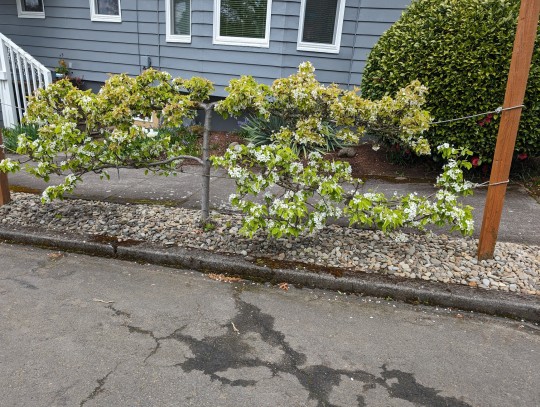
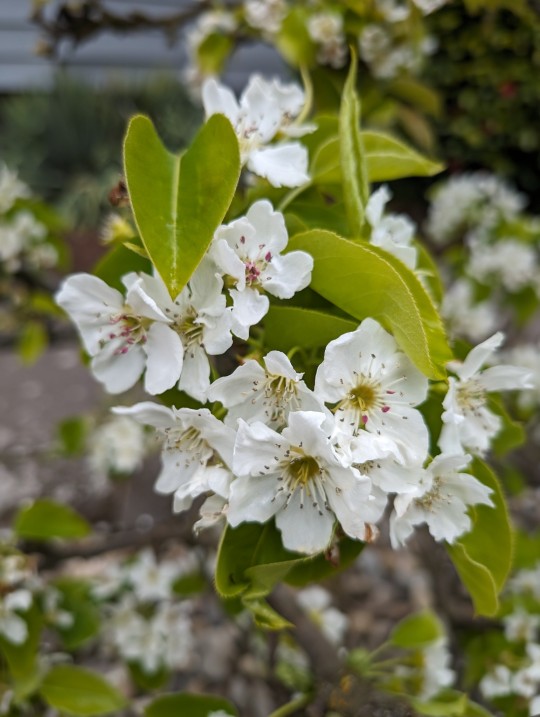
Espalier in bloom!
24 notes
·
View notes
Photo

Espalier on side of house in the medieval town of Rothenberg, Germany
#Street Photography#espalier#tree#germany#medieval#original photography#photographers on tumblr#luxlit#lensblr
104 notes
·
View notes
Text

How to Grow Espalier Apple Trees Trees can be both beautiful and functional, and growing espalier apple trees is a delightful way to maximize your garden space while enjoying delicious fruit. In this guide, you'll learn step-by-step how to train and care for your apple trees, creating stunning visual displays against walls or fences. You'll discover tips on selecting the right varieties, the proper techniques for pruning, and how to provide the right support as your trees grow. Get ready to cultivate your own mini orchard with a twist!Choosing the Right Apple Tree Variety While selecting an apple tree variety for your espalier garden, it's important to consider your climate, space, and personal taste. Look for varieties that not only complement your gardening goals but also flourish in your local environment. Popular choices include dwarf or semi-dwarf varieties like 'Honeycrisp', 'Fuji', and 'Granny Smith', which can thrive when shaped and pruned appropriately for espalier techniques. How to Select the Best Varieties for Espalier Some factors to consider when selecting apple tree varieties for espalier include growth habits, fruiting times, and flavor profiles. Make sure to choose varieties that are known for their hardiness and adaptability to your specific growing conditions, ensuring a fruitful and beautiful landscape. Tips for Picking Disease-Resistant Trees To find disease-resistant apple trees, look for varieties that have been bred specifically for this trait. Start by doing some research on the diseases common in your area and selecting trees that perform well against those threats. Here are some tips to help you: Choose varieties with resistance to scab, fire blight, and powdery mildew Consult local nurseries or extension services for recommendations Inquire about or read reviews on the disease resistance of the varieties you're considering Assume that every garden will face challenges, so prioritizing disease resistance will save you time and effort in the long run. Trees that are bred for disease resistance often have improved growth rates and can produce better yields. By selecting trees that adapt well to your environment, you can also ensure less reliance on chemicals for pest and disease management. Keep the following guidelines in mind when seeking disease-resistant trees: Look for trees with strong vigor and robust growth patterns Purchase from reputable nurseries that provide disease-free stock Consider heirloom varieties that have shown natural resilience over generations Assume that investing in disease-resistant trees is a wise choice for healthier, more productive apple trees down the line.Essential Tools and Materials Some vital tools and materials will help you successfully grow espalier apple trees. You'll need pruning shears, a saw for larger branches, high-quality soil, and stakes to support your trees as they grow. Additionally, consider using ties to secure branches to the supports and mulch to retain moisture in the soil. By gathering these items ahead of time, you can streamline the espalier process. How to Gather Your Gardening Essentials Materials like gardening gloves, fertilizers, and gardening loppers will be extremely helpful in your espalier journey. Visit your local gardening store or shop online to find everything you need. Don't hesitate to ask for recommendations from staff or gardening communities to ensure you're getting the best products for your trees. Tips for Choosing the Right Support System There's a variety of support systems available for your espalier apple trees, and selecting the right one is key to their success. Consider options like sturdy trellises, fences, or wires, which will allow your trees to grow horizontally and promote healthy fruit production. Make sure the support you choose is not only durable but also matches the design you envision for your garden. Evaluate the size and weight of the apple varieties you plan to grow.
Look for materials that can withstand weather conditions in your area. Ensure your system allows for easy access for pruning and harvesting. Knowing the specific needs of your apple trees will guide you in selecting the perfect support system for their growth. Essential to your espalier journey is understanding the different types of support systems available. Options like traditional horizontal trellising or wall-mounted designs can create an aesthetically pleasing layout for your trees. Be sure to consider the amount of space you have, as well as the type of growth habit your apple varieties exhibit. Functionality and aesthetics can go hand-in-hand, so you can enjoy both the beauty and productivity of your espalier apple trees. Choose sturdy materials that provide reliable support throughout the growing season. Consider the ease of installation and maintenance for your chosen system. Check if your local climate influences the type of support that will work best. Knowing your gardening environment will help you make informed decisions about the right support system for your espalier apple trees.Preparing the Planting Site You want to take the time to prepare your planting site properly, as this sets the foundation for your espalier apple trees' success. Choose a location with ample sunlight, access to water, and protection from harsh winds. Ensure the area is spacious enough for the tree's growth and supports the structure you plan to use for training the branches. How to Find the Perfect Spot for Your Espalier While selecting the ideal location, look for a spot that receives at least six hours of direct sunlight daily. This helps your apple trees thrive, producing healthy fruit and strong branches. Consider areas near a wall or fence that can provide additional warmth and stability for your trees. Factors to Consider for Soil Quality and Drainage If you want your espalier apple trees to flourish, pay attention to the soil quality and drainage. Well-draining soil is necessary to prevent waterlogged roots, which can lead to rot. Look for loamy soil with organic matter, and consider testing the pH level to make sure it's suitable for apple trees. Well-drained soil to avoid root rot pH levels between 6.0 and 7.0 Organic matter to promote healthy growth After assessing the soil, you might want to amend it with compost or organic fertilizers to enhance quality. It's also beneficial to create a raised bed if you have heavy clay soil, ensuring better drainage and root health. Consider a raised bed for better drainage Test for contaminants if planting in older gardens Regularly check moisture levels to ensure proper hydration Another important aspect is to monitor the drainage of your site. If water tends to pool after heavy rainfall, think about incorporating drainage solutions, such as French drains, or selecting a different location that promotes proper runoff and healthy root development.Planting Your Espalier Apple TreesNow that you've selected your perfect espalier apple tree varieties, it's time to get them in the ground! Planting at the right time of year, usually in early spring or fall, ensures your trees get settled before the temperature extremes of summer and winter. Make sure the location has plenty of sunlight and good drainage to set your trees up for success. How to Properly Plant Your TreesThere's a simple process for planting your espalier apple trees that will help them thrive. Start by digging a hole that's twice as wide as the root ball and just as deep. Place the tree in the center, making sure the graft union is above soil level, and backfill gently, ensuring no air pockets remain. Water thoroughly after planting to help establish roots. Tips for Spacing and OrientationYour trees need room to grow, so spacing is important. Here are a few tips to consider when planting: Space trees about 6 to 8 feet apart for proper air circulation. Orient your trees to face the sun for optimal light exposure.
Avoid placing them near large trees or structures that block sunlight. Knowing how to properly space your trees will help them grow healthier and produce more fruit. Tips for spacing and orientation extend beyond just how far apart you plant your trees. Consistent spacing will allow light to reach all parts of your espalier, encouraging balanced growth. Consider the mature height and spread of each variety when planning, as this can affect their performance in your garden. It's helpful to use stakes or strings to mark your desired spacing before digging. Here are some quick notes: Consider planting on a south-facing wall for warmth. Ensure your trees are accessible for maintenance and harvesting. Take into account the prevailing wind direction to protect fragile branches. Knowing the right techniques will lead to a thriving espalier apple garden.Training and Pruning Techniques Despite the initial effort, training and pruning your espalier apple trees will reward you with delightful fruits and a stunning garden feature. This process promotes healthy growth and ensures the tree maintains its desired shape. Regular pruning will help direct the tree's energy toward producing fruit, while training the branches will create an attractive framework that maximizes sunlight exposure. How to Train Your Trees for an Espalier Shape Espalier is about guiding your apple trees to grow flat against a trellis or wall. To start, choose a young tree and secure its main stem upright. As the tree matures, gently tie the lateral branches to the framework you've established, pruning excess growth to promote a balanced shape. Regularly check your ties to prevent damage, and keep adjusting as the tree expands. Factors to Keep in Mind When Pruning You should consider several factors when pruning your espalier apple trees to ensure they thrive. Some key aspects include the tree's age, the season, your pruning technique, and your overall goals for the tree. Understanding these elements can drastically affect the health of your trees and the quality of your fruit. Age of the tree influences how much and when to prune. Seasons matter; late winter and early spring are ideal for most pruning activities. Technique is important; always use clean, sharp tools to make precise cuts. This awareness will help you maintain healthy growth and productive branches. With proper attention to these factors, you'll be better equipped to ensure your espalier apple trees flourish. Take note of specific varieties, as some may require unique care. Pay attention to any signs of disease or overcrowding while pruning to promote airflow and light within the tree. Regularly assess your espalier's shape and adjust your pruning techniques as needed. Check for any dead or diseased branches that need removal. Look for branches growing inward or crossing each other; remove these to enhance structure. Leave enough material on the tree to stimulate fruit production. This thoughtful approach will enrich your gardening experience and elevate your espalier apple trees' performance.Watering and Nutrient Needs To ensure your espalier apple trees thrive, you must establish a proper watering routine and provide the right nutrients. Adequate moisture is important for healthy growth, especially during the flowering and fruiting stages. Be attentive to weather conditions and soil moisture levels, adjusting your watering accordingly to keep the roots hydrated without over-saturating them. How to Establish a Watering Routine There's no one-size-fits-all approach to watering, as it depends on your local climate and soil conditions. Start by checking the top inch of soil; if it's dry, it's time to water. Aim for deep, infrequent watering to encourage root growth, ideally providing 1-2 inches of water weekly during dry spells. Tips for Fertilizing Your Espalier Trees Now that you have your watering routine down, let's talk about fertilizing your espalier trees to maximize their potential.
Using a balanced, slow-release fertilizer tailored for fruit trees can support healthy growth and fruit production. When fertilizing, consider these tips: Apply fertilizer in early spring before the growth season starts. Use a soil test to determine specific nutrient needs. Avoid over-fertilizing, as this can harm your trees. This approach will not only improve fruit quality but also sustain the health of your trees year after year. Nutrient management is vital for the productive growth of your espalier apple trees. Opt for organic options like compost or well-rotted manure, which enrich the soil naturally. A balanced blend of nitrogen, phosphorus, and potassium will help your trees flourish. Consider these additional tips: Side-dress with compost mid-summer for an extra nutrient boost. Monitor your trees for signs of nutrient deficiencies or excesses. Mulch around the base to retain moisture and suppress weeds. This ensures your trees remain healthy and fruitful throughout the growing season.Conclusion Summing up, growing espalier apple trees can be a rewarding journey that brings both beauty and delicious fruit to your garden. By selecting the right tree varieties, training them properly, and maintaining consistent care, you can create a stunning feature that enhances your outdoor space. Enjoy the process of shaping your trees, and soon you'll be harvesting your very own apples while relishing the satisfaction of your hard work. Happy gardening! https://gardenreview.us/how-to-grow-espalier-apple-trees/?feed_id=220&_unique_id=672dc0c587fc3 https://gardenreview.us/how-to-grow-espalier-apple-trees/?feed_id=220&_unique_id=672dc0c587fc3
2 notes
·
View notes
Photo
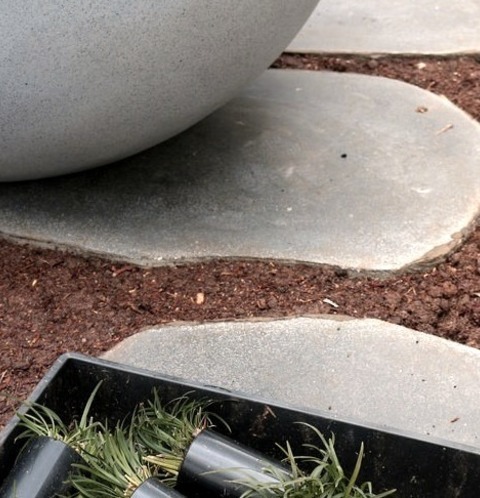
Front Yard in Melbourne An example of a mid-sized contemporary drought-tolerant and partial sun front yard stone landscaping in spring.
2 notes
·
View notes
Text
Ooooooooo✨✨✨
My mentor: I wanna do a wall garden, because it doesnt take up too much space
Me, already vibrating from the dopamine and adrenaline: Let's talk about espaliers
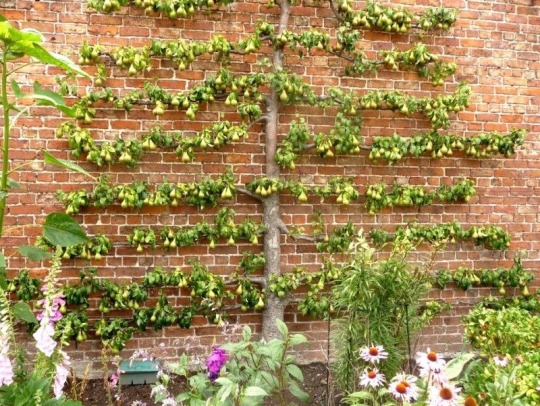
55K notes
·
View notes
Text

Espaliered apple tree on an iron arbor behind the house. Ancient rickety Adirondack chairs complete the picture.
0 notes
Text

26/4.2024 (2) - the pear espalier is about to blossom - hope the frosty nights stop soon
0 notes
Text

ちなみに支柱やトレリスを使うものもある。
1 note
·
View note
Text

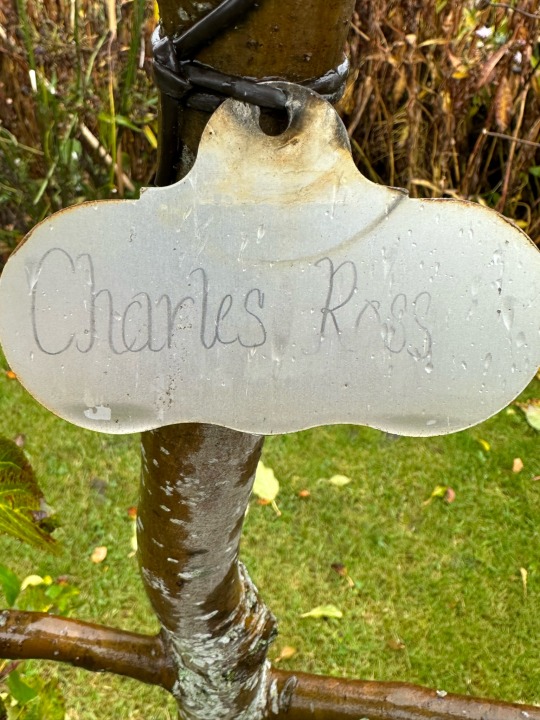
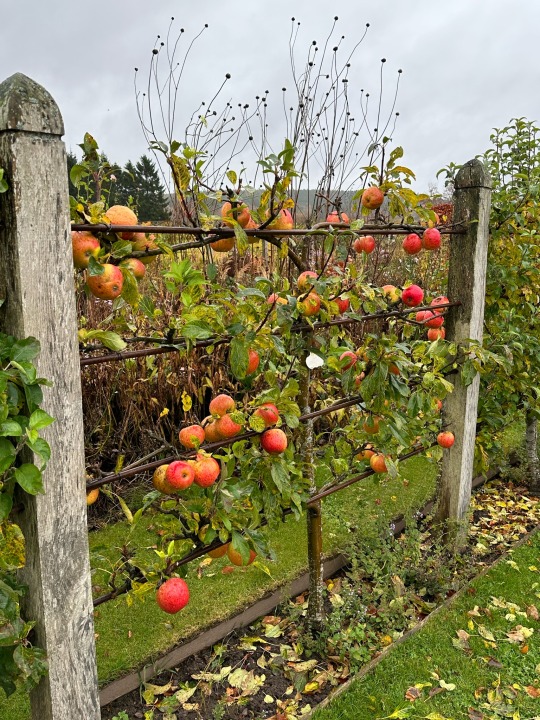
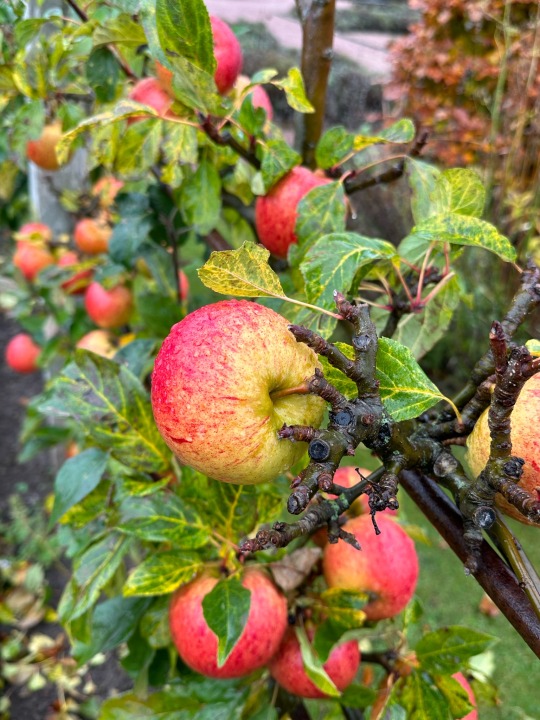
Plant of the Day
Saturday 11 November 2023
An apple raised by Charles Ross in Berkshire and first exhibited in 1890 was Malus domestica ‘Charles Ross’. It produces large, sweet flavoured, juicy orange-red fruit but should be eaten by the end of October for the best flavour. The blossom attracts bees, and later any fallen fruit are popular with the birds whilst the buds are popular with bullfinches.
Jill Raggett
#Malus#apples#apple#fruit#espalier#tree#fruit trees#plants#horticulture#gardens#garden#productive garden#walled garden#Gordon Castle#scotland
193 notes
·
View notes
Text


This espalier is an apple tree!
#espalier#apple tree#plant photography#plant blog#plants#plantblr#neighborhoodsightseeing#garden#plant#gardening#expert level
22 notes
·
View notes
Photo

Melbourne Front Yard Photo of a mid-sized contemporary partial sun front yard mulch garden path in spring.
1 note
·
View note
Text
Landscape Gravel
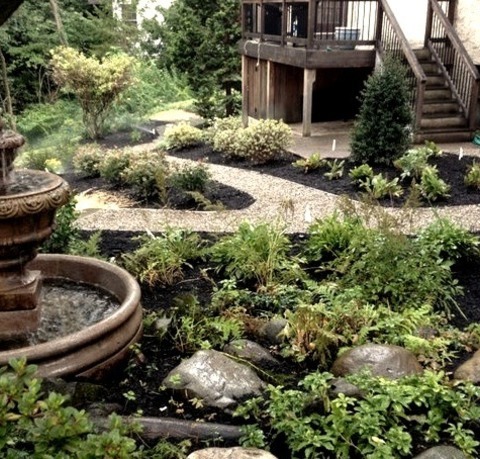
Photo of a large traditional partial sun backyard gravel landscaping.
0 notes
